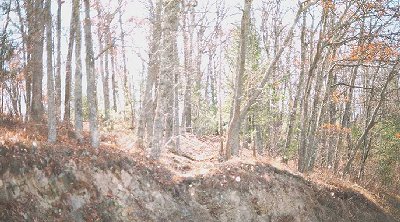
McDowell
May 8, 1862
After Stonewall Jackson diverted Union troops and attention back to the Shenandoah Valley with his attack at Kernstown, the Union pursuit forced him to the southern end of the Valley. By taking up a flanking position atop the Blue Ridge Mountains, he protected the vital railroad town of Staunton from further Union advances.
But in addition to the Union threat from the Shenandoah Valley itself, Staunton was threatened by a Union force under Gen. John Fremont from the Allegheny Mountains to the west. Fremont and Lincoln had created an unworkable scheme to march into the Valley, then move into East Tennessee to liberate the Union sympathizers. As a part of this, additional Union troops were to capture the railroad bridge over the New River in Southwest Virginia, but this effort failed and a Yankee column was nearly cut off at Lewisburg.

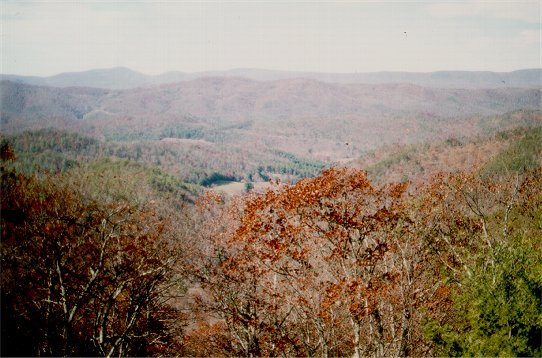
Fort Johnson and the View From the Fort
Covering the area west of Staunton, Confederate Gen.
Edward "Allegheny" Johnson had withdrawn to Fort Johnson atop Shenandoah
Mountain on April 1st from a more vulnerable position further west. Atop
Shenandoah Mountain,
his small force protected Staunton from the Union forces of Gen. Milroy's portion
of Fremont's army. The Yankees thought the position atop Shenandoah
Mountain was nearly impregnable, but on April 18th, Johnson abandoned the
fort. Staunton was now vulnerable from the west, and Jackson had to
do something.

Turnoff to Sitlington Hill
| Ewell's division from east of the Blue Ridge was placed
under Jackson's command. Jackson's position atop the Blue Ridge threatened
Banks' rear should he move on Staunton. To Ewell's befuddlement, Jackson
ordered his division to the Blue Ridge camp - to keep Banks in check but without telling him why - while Jackson
moved to join Johnson. The
roads were muddy and nearly impassable, so the men marched from the Valley back east across the
Blue Ridge to the rail line. Thinking that they were headed to Richmond, the confused troops then took the train to
Staunton and marched west. After tiresome marching, Jackson's men, approaching
down the road on the right of the picture, turned into the open field you can
see on the left of the picture and marched up Sitlington's Hill, overlooking
Federal camps at McDowell.
|
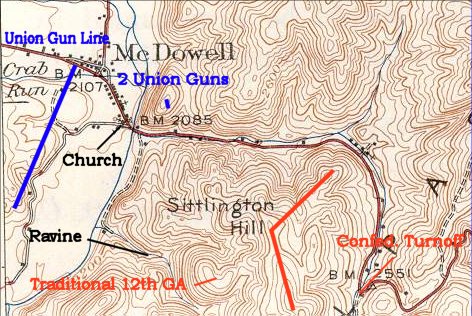 |

From Sitlington Hill Showing Confederate Approach March
This is the view looking back from Sitlington Hill over the terrain the Confederates traversed. In the background is Shenandoah Mountain. By this time, it was late in the day, and Jackson believed that the day's action was over. For the next day, he planned to flank the Union camp to its south.
The Union commander, Brig. Gen. Robert Milroy, however, learning of the Confederate presence on the hills above his camp, decided to attack late that day in order to gain time to withdraw that the evening.
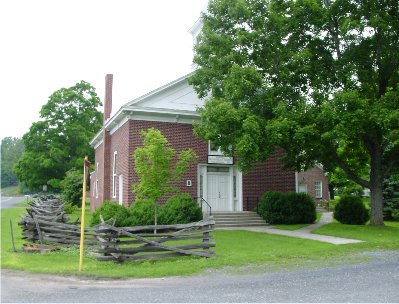 |
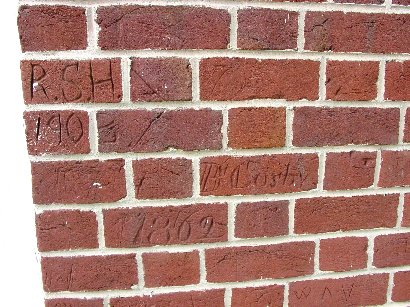 |
|
Presbyterian Church in McDowell Union troops stationed in McDowell left reminders of their visit on the brick wall of the Presbyterian Church. After the battle, the church was used as a hospital, and the dead of both sides were buried across the road in front of the church.
|
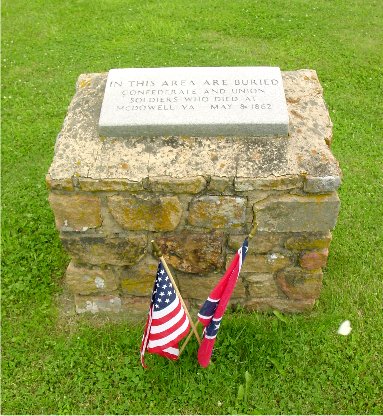 |
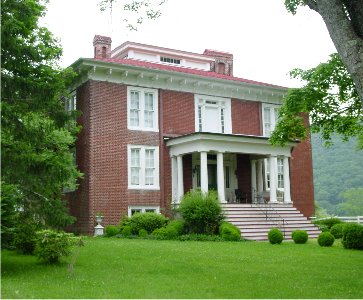
Milroy's Headquarters in McDowell
This house was used as a headquarters by the mentally ill Milroy. Off the picture to the right is a ravine where Union troops wenched two pieces of artillery up to Cedar Knob, just north of Sitlington Hill. We'll get a view from the area next.

From Hull's Hill
Not far beyond, and slightly higher than Cedar Knob, is Hull's Hill where there is an excellent view of the battlefield. This area is private property, but at the time of my visit with the Roanoke Civil War Roundtable, just for the special occasion, the owner allowed us access and even took us up the hill in trucks.
On the far right is a small ridge where Union artillery was placed. It was difficult to get enough elevation for the guns, and some digging was required. Union infantry deployed near the foot of this ridge, advanced across the flat area and the creek, then climbed Sitlington Hill, which is visible as the large hill-mass in the center and left of the picture. Here the attacking Yankees met the enemy.
Between Hull's Hill and Sitlington Hill is the main road
from Staunton into McDowell. Some Union troops advanced along this
road until they were repulsed by the Confederate right flank on the ridgeline
on the far left of the picture.

Confederate Right
This is the area between Hull's Hill on the left, and Sitlington Hill on the right, with the road between them heading back to Staunton. As mentioned for the previous photo, the prominent hill in the center was the location of the right of the Confederate line, which was unsuccessfully attacked by Union troops advancing up this road.

From Near the Union Artillery
This is the view looking across the field Milroy's men crossed. The town of McDowell is in the left-center background. Cedar Knob rises above the town and was the position of one or two Union guns wenched there during the battle. The ridge to the left was the position of most of the Union artillery. Union infantry crossed this field to attack the Confederates on Sitlington's hill in the center of the picture. They are thought to have moved up the ravine on the right-center of the picture.

View From Sitlington Hill - Confederate Left Flank
At the time of the battle there were some clearings on Sitlington Hill. This is the view from the area of the Confederate left. On our Civil War Roundtable tour, a local gentleman who has done metal detecting on the battlefield showed us the accepted location of the 12th Georgia and where he believes they fought. He found a number of rounds near a knob further north of the accepted position. Considering the rugged nature of the terrain, confusion of this sort is understandable, making his case all the more convincing.

Implied Position of the 12th Georgia
This is the clearing near where a number of expended rounds were found, and presumably where the 12th Georgia was positioned. The regiment was in front of the main line and attracted fire from three sides. The troops refused to take cover, and they took heavy casualties, with a high percentage of hits to the head. The regiment was never the same after the battle.
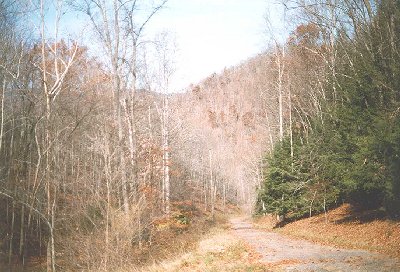
Lower Slopes of Sitlington's Hill
Federal infantry undoubtedly had a difficult time climbing the hill, which is steep in many places. Nevertheless, once in position, the Yankees opened a deadly fire on the rebels silhouetted against the sky. The Yanks clearly got the better of the firefight, losing 256 men to 500 Confederate casualties, but they could not push the Confederates off the ridge. As night fell, the Union force withdrew north.
In the days that followed, Jackson pursued Milroy north. This threatened the flank of Banks in the Shenandoah Valley and forced him back to Strasburg. Jackson then re-entered the Valley, joined Ewell at Luray and struck a detachment at Front Royal. After nearly cutting off Banks' retreat, Jackson dealt him a major blow at the first battle of Winchester. After being threatened with encirclement, Jackson withdrew to the southern end of the Valley, where he turned on his pursuers at Cross Keys and Port Republic.
Back to Civil War Virtual Battlefield Tours